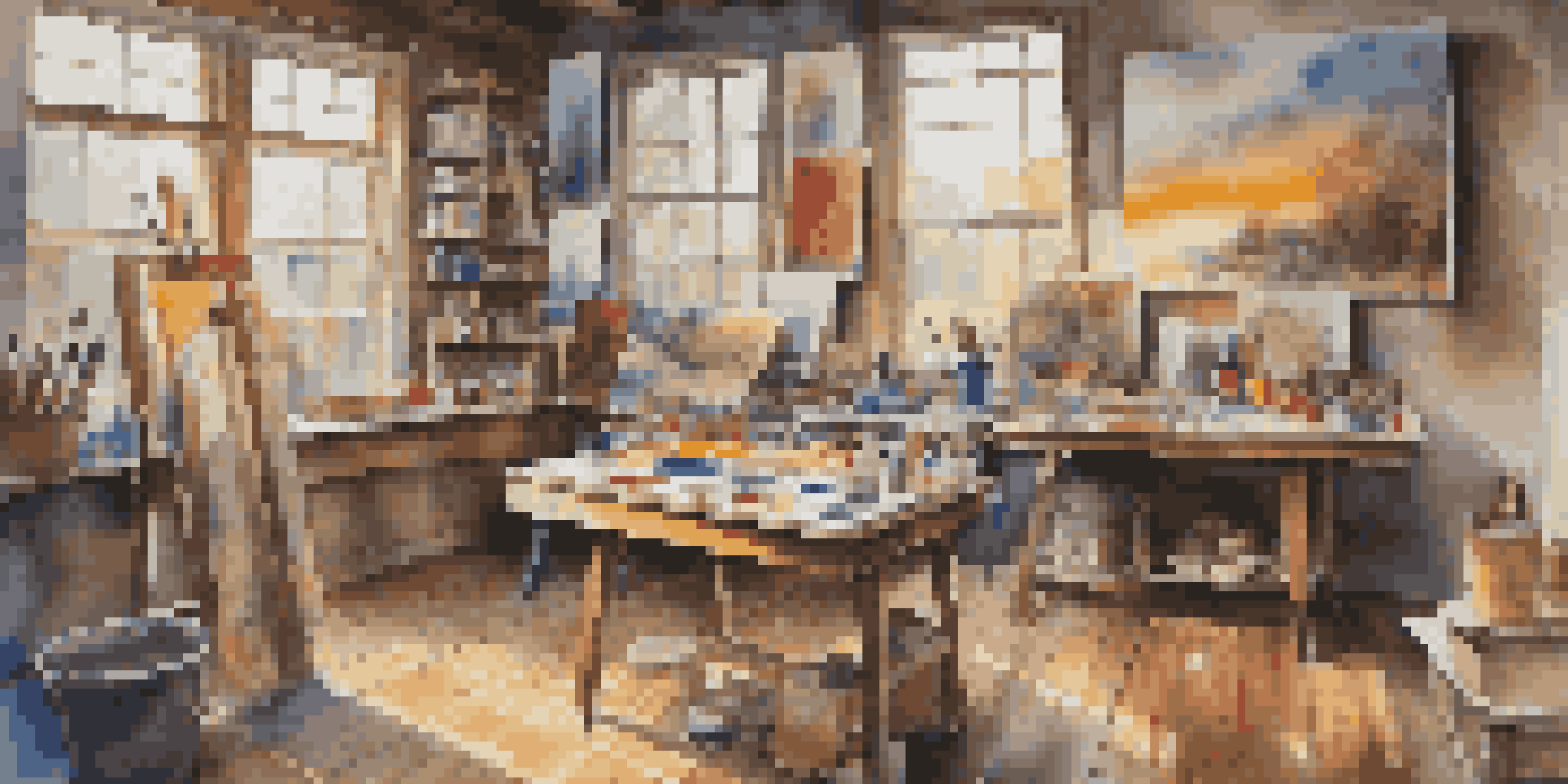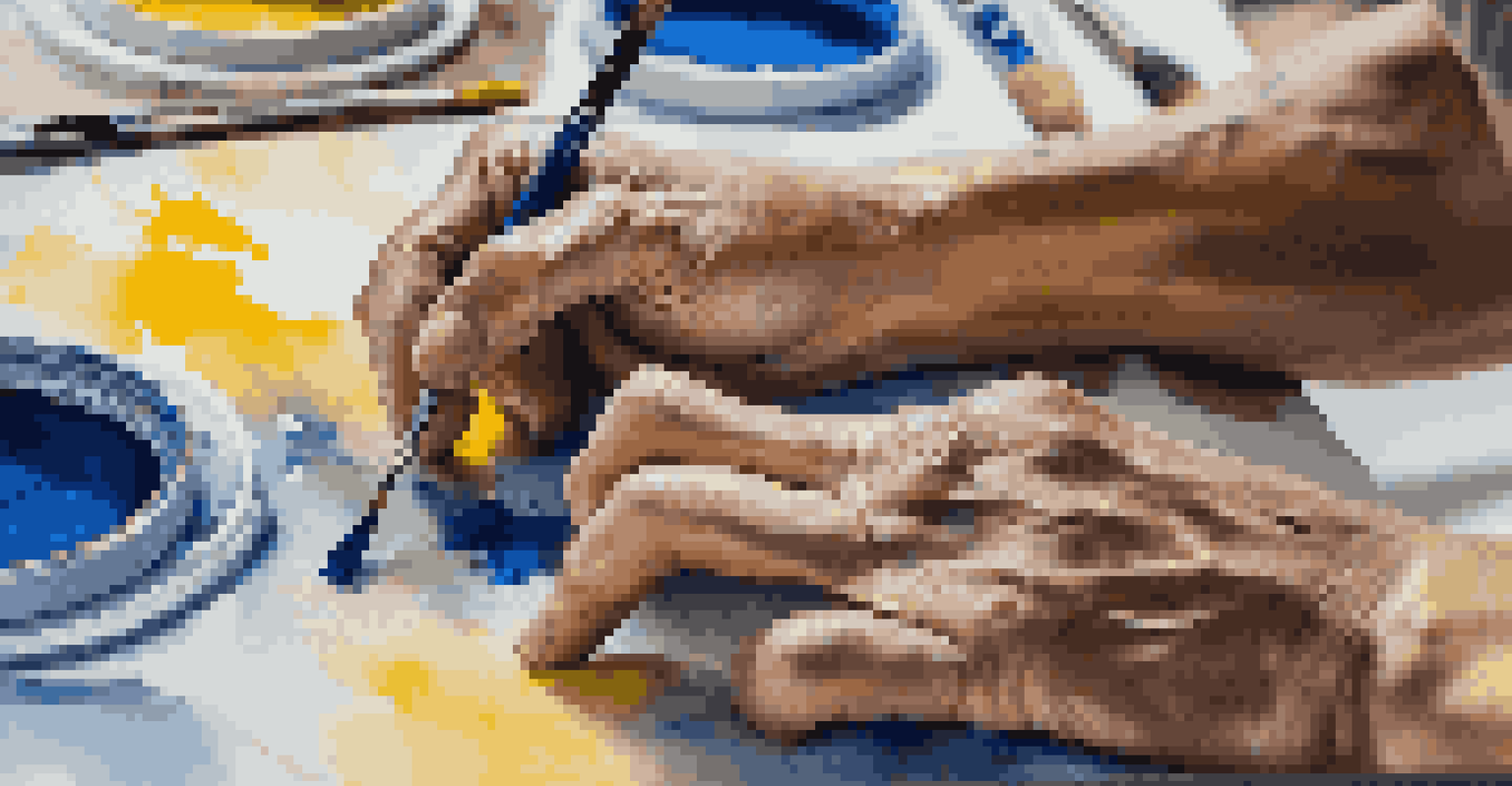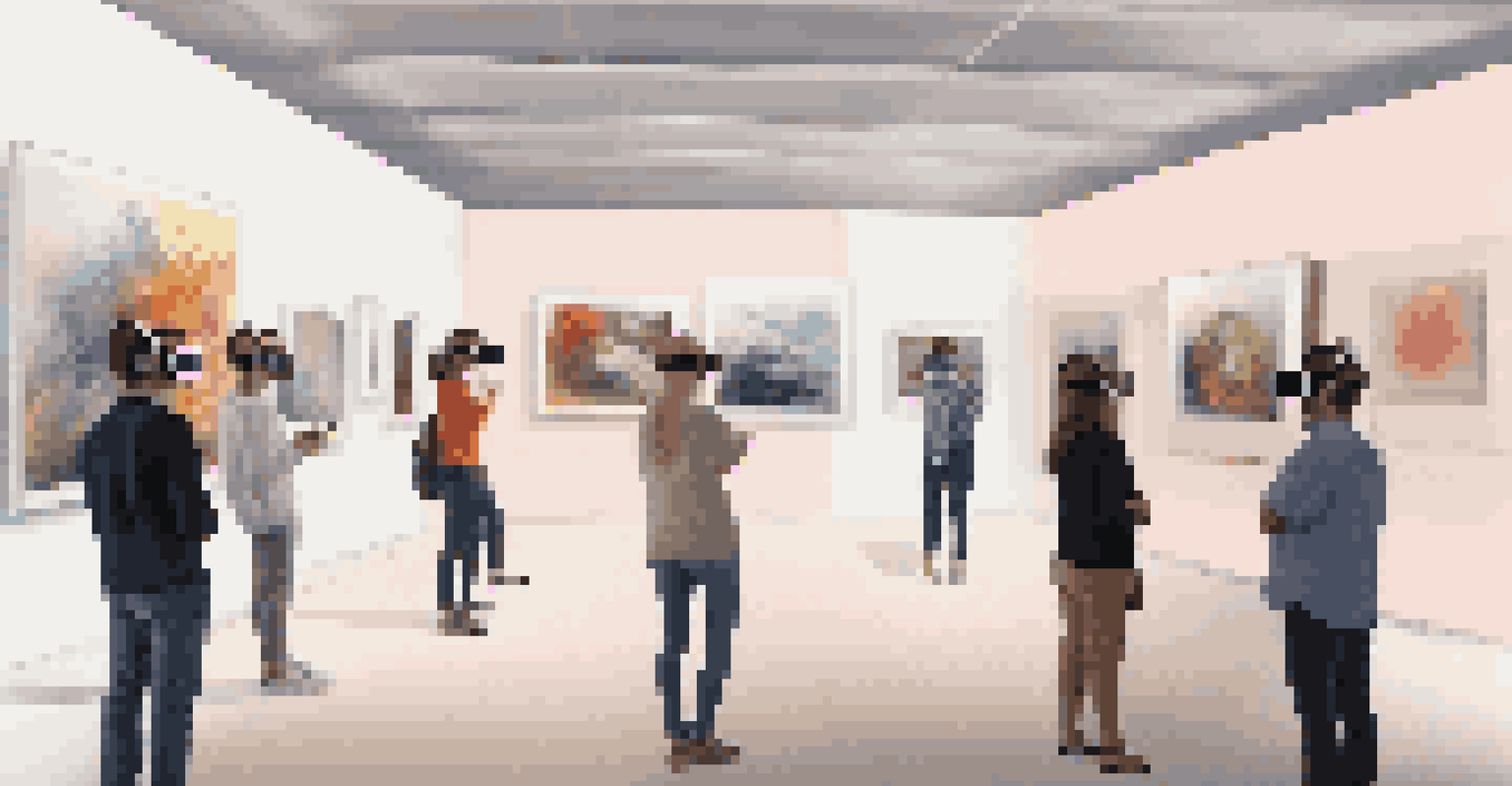The Evolution of Art Marketing in a Digital World

The Shift from Traditional to Digital Art Marketing
Art marketing has seen a significant transformation over the last few decades. Traditionally, artists relied on galleries, exhibitions, and print media to showcase their work. However, with the advent of digital technology, the landscape has shifted dramatically, allowing artists to reach a global audience with just a few clicks.
Art is not what you see, but what you make others see.
Today, social media platforms like Instagram and Pinterest serve as virtual galleries, enabling artists to display their work directly to potential buyers. This democratization of art marketing means that even emerging artists can gain visibility without the need for expensive gallery fees or extensive networking.
Moreover, this shift has not only benefited artists but also art lovers, who can now discover diverse artworks from around the world. The convenience of online browsing has reshaped how we appreciate and purchase art, making it more accessible than ever.
The Rise of Social Media in Art Promotion
Social media has become a cornerstone in the art marketing strategy of many creators. Platforms like Instagram, Facebook, and TikTok allow artists to share their creative process, engage with followers, and build a community around their work. This real-time interaction fosters a connection between artists and art enthusiasts that was previously hard to achieve.

For instance, an artist can share behind-the-scenes videos of their creative process, leading to a deeper appreciation of the artwork once it's completed. This storytelling aspect not only captivates an audience but also encourages them to share the content, amplifying the artist's reach exponentially.
Digital Shift in Art Marketing
Artists can now reach a global audience through digital platforms, bypassing traditional gallery systems.
Furthermore, social media provides invaluable analytics and insights, allowing artists to understand their audience better. This data-driven approach helps them tailor their marketing efforts, ensuring their work resonates with the right people.
The Role of Online Galleries and Marketplaces
Online galleries and marketplaces have emerged as vital platforms for artists to sell their work. Websites like Saatchi Art, Artsy, and Etsy allow artists to create profiles, showcase their portfolios, and connect with buyers directly. This shift has opened new avenues for artists to monetize their creativity without relying solely on traditional galleries.
The best way to predict the future is to create it.
These platforms also provide a sense of legitimacy and professionalism, which can be particularly beneficial for emerging artists. By listing their work alongside established artists, new creators can gain credibility and visibility in a competitive market.
Moreover, many online marketplaces offer additional resources, such as marketing tools and customer support, making it easier for artists to focus on their craft rather than the business side of things.
Email Marketing: A Direct Line to Art Lovers
Email marketing remains a powerful tool in the art marketing toolkit. Unlike social media, where visibility can be fleeting, emails allow artists to communicate directly with their audience. By building a mailing list, artists can share updates, new collections, and exclusive offers, keeping their followers engaged and informed.
For example, an artist might send out a monthly newsletter featuring recent works, exhibitions, or even personal anecdotes about their creative journey. This personal touch helps to foster a sense of community and loyalty among subscribers, encouraging them to support the artist's work.
Social Media Enhances Engagement
Platforms like Instagram and TikTok allow artists to connect directly with fans, fostering community and storytelling.
Additionally, email marketing allows for targeted campaigns, ensuring that messages reach the right audience. By segmenting their list based on interests or previous purchases, artists can tailor their content, ultimately increasing engagement and sales.
Leveraging SEO for Art Visibility
In a digital world flooded with content, Search Engine Optimization (SEO) is crucial for artists looking to stand out. By optimizing their websites and online portfolios, artists can improve their visibility on search engines like Google. This means using relevant keywords, creating quality content, and ensuring their sites are user-friendly.
For instance, an artist who specializes in abstract painting might use keywords like 'modern abstract art' or 'contemporary paintings' in their website content. This strategic approach helps potential buyers find their work more easily, increasing the chances of sales.
Moreover, blogging about their artistic process or art-related topics can further enhance visibility. Not only does this establish the artist as an authority in their field, but it also drives organic traffic to their site.
The Impact of Virtual Reality and Augmented Reality
Virtual Reality (VR) and Augmented Reality (AR) are revolutionizing the way art is experienced and marketed. These technologies allow potential buyers to visualize artworks in their own spaces before making a purchase. For example, an AR app can superimpose a painting onto a wall, giving buyers a better sense of scale and fit.
This immersive experience not only enhances the buying process but also creates a memorable connection between the art and the viewer. By embracing these technologies, artists can offer unique and engaging experiences that set them apart in a crowded market.
Emergence of Online Marketplaces
Online galleries and marketplaces provide artists with new opportunities to sell their work and gain visibility.
Furthermore, VR exhibitions allow art lovers to explore galleries and installations from the comfort of their homes. This innovative approach expands access to art, making it possible for people worldwide to engage with and appreciate various artworks.
The Future of Art Marketing in a Digital World
As technology continues to evolve, the future of art marketing looks promising and dynamic. We can expect to see even more innovative approaches to showcasing and selling art, including advancements in AI and machine learning. These technologies may assist artists in understanding trends and predicting buyer preferences, tailoring their marketing strategies accordingly.
Additionally, the growing emphasis on sustainability and social values may influence how art is marketed. Artists who prioritize eco-friendly practices or social causes may find new opportunities to connect with like-minded audiences.

Ultimately, the digital world offers endless possibilities for artists to explore and expand their reach. By staying adaptable and open to new technologies, artists can thrive in this ever-changing landscape, ensuring their work continues to resonate with audiences for years to come.